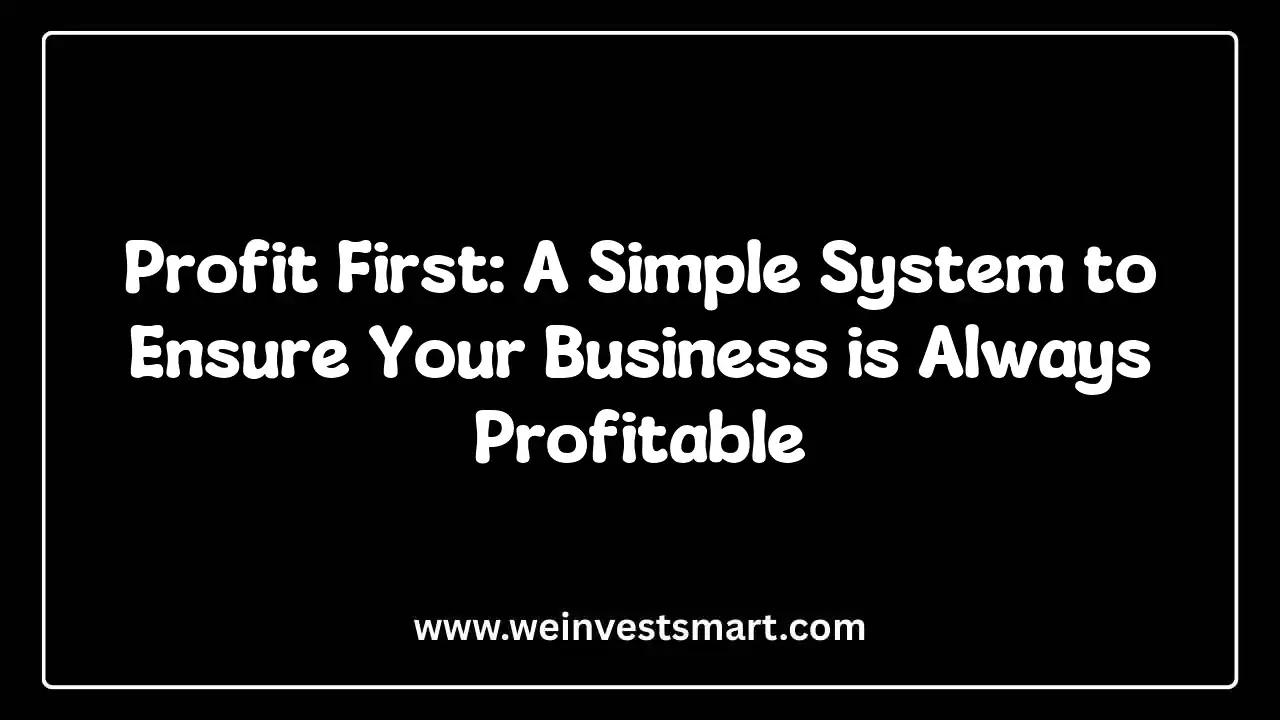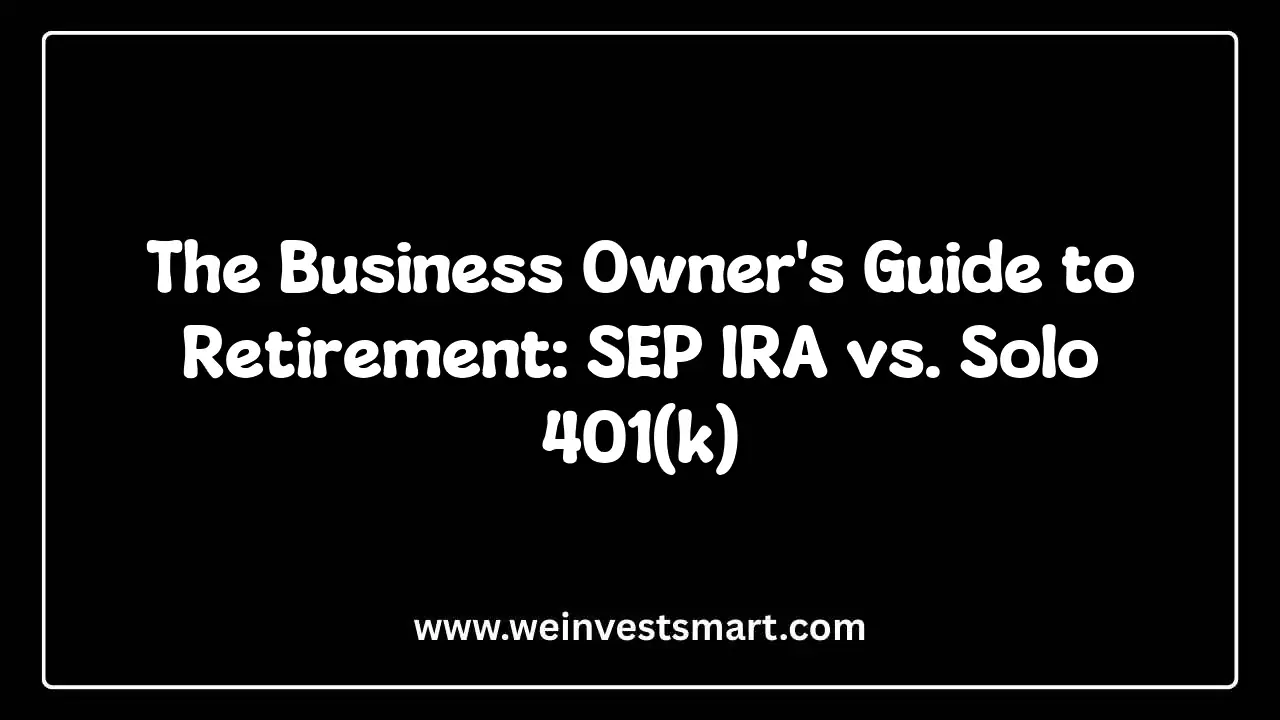· WeInvestSmart Team · business-finance · 11 min read
The 3 Financial Statements Every Business Owner Must Understand: A Simple Breakdown
Demystify the Income Statement (Profit & Loss), the Balance Sheet, and the Cash Flow Statement. Explain what each one tells you about the health of your business in plain English.
Most business owners are flying blind, and they don’t even know it. They track sales, watch their bank balance, and have a gut feeling about how things are going. But here’s the uncomfortable truth: gut feelings don’t pay the bills, and your bank balance tells you almost nothing about the actual health of your business. Going straight to the point, running a business without understanding your financial statements is like trying to navigate a ship in a storm without a compass, a map, or a view of the stars. You’re adrift, and you’re inviting disaster.
We’ve been conditioned to think of financial statements as complicated documents for accountants and investors. The Income Statement, the Balance Sheet, the Cash Flow Statement—these terms can feel intimidating, loaded with jargon that seems designed to confuse. But what if we told you these aren’t just boring reports? What if they are the story of your business, written in the language of numbers?
Here’s where things get interesting. These three documents are not independent; they are deeply interconnected, each telling a different part of the same story. The Income Statement is the plot—the action and drama of your sales and expenses. The Balance Sheet is the setting—a snapshot of your resources and obligations at a single moment. And the Cash Flow Statement is the narrative voice, revealing the true, unvarnished movement of your lifeblood: cash. And this is just a very long way of saying that learning to read them is the single most empowering skill you can develop as an entrepreneur.
The Performance Report Card: The Income Statement (Profit & Loss)
Before we can understand anything else, we need to know if the business is actually making money. That’s the entire purpose of the Income Statement, also famously known as the Profit and Loss, or P&L, statement. Think of it as your business’s report card for a specific period—a month, a quarter, or a year. It answers one fundamental question: Are we profitable?
Going straight to the point, the Income Statement follows a very simple, logical formula: Revenue - Expenses = Net Income (or Profit). It starts at the top with your total sales (the “top line”) and systematically subtracts all the costs of doing business until you arrive at the final number at the bottom (the “bottom line”). This structure tells a story of how efficiently your company transforms revenue into actual profit.
Let’s break down the key characters in this story:
- Revenue (or Sales): This is the total amount of money you’ve earned from selling your products or services during the period. Notice the word “earned,” not “received.” This is a crucial distinction we’ll come back to.
- Cost of Goods Sold (COGS): These are the direct costs of producing what you sold. For a coffee shop, this would be coffee beans, milk, and cups. For a consultant, it might be zero. Subtracting COGS from Revenue gives you your Gross Profit, a vital metric that shows the profitability of your core product or service.
- Operating Expenses: These are all the other costs required to run the business, but not directly tied to a specific product. This includes things like rent, salaries for your marketing team, utility bills, and software subscriptions.
- Operating Income: After you subtract operating expenses from your gross profit, you get your operating income (often called EBIT—Earnings Before Interest and Taxes). This tells you how profitable your core business operations are, before things like debt payments and taxes are factored in.
- Net Income (The Bottom Line): After accounting for everything else—interest on loans, taxes—you’re left with Net Income. This is your true profit for the period. If it’s positive, congratulations, you’re profitable! If it’s negative, you have a net loss.
This sounds like a trade-off between detail and simplicity, but it’s actually a narrative. The Income Statement tells you not just if you made money, but how. Is your gross margin shrinking? Maybe your supply costs are rising faster than your prices. Are operating expenses ballooning? Perhaps your marketing spend isn’t delivering a return. This is your diagnostic tool for performance.
The Financial Snapshot: The Balance Sheet
While the Income Statement shows performance over time, the Balance Sheet is a photograph. It captures a single moment—December 31st, for example—and shows the exact financial position of your company on that day. It answers two critical questions: What does my business own, and what does it owe?
To understand this, we need to go to the heart of the problem, which most people don’t know: the entire universe of accounting is built on one elegant, unbreakable equation: Assets = Liabilities + Equity. This isn’t just a formula; it’s a law of nature in business. It must always balance. Let’s demystify these components.
Assets: What You Own. These are the economic resources your business controls that have future value. They are typically split into two types:
- Current Assets: Things that are cash or can be converted to cash within a year, like the money in your bank account, accounts receivable (invoices you’ve sent but haven’t been paid for yet), and inventory.
- Non-Current (or Fixed) Assets: Long-term resources not intended for quick sale, like property, vehicles, machinery, and patents.
Liabilities: What You Owe. These are your company’s obligations to others. Like assets, they are also split:
- Current Liabilities: Debts you need to pay within one year, such as accounts payable (bills from your suppliers), short-term loans, and credit card balances.
- Long-Term Liabilities: Debts that are not due for more than a year, like a mortgage on your building or a multi-year business loan.
Equity: What the Owner(s) Have. This is the residual value. In other words, if you sold all your assets and paid off all your liabilities, the money left over would be your equity. It represents the owners’ stake in the company and is composed of two main things: money invested by the owners (paid-in capital) and profits the business has earned and kept over time (retained earnings).
The funny thing is, the Balance Sheet gives you a profound insight into your company’s stability. Are your current assets greater than your current liabilities? If so, you have good liquidity and can likely cover your short-term bills. Is your debt (liabilities) dwarfing your equity? That could be a red flag for lenders, indicating the business is running on borrowed money and has a high financial risk.
The Reality Check: The Cash Flow Statement
Here’s where things get interesting and where most businesses get into trouble. Your Income Statement can show a massive profit, but you can still go bankrupt. How is this possible? Because profit is not the same as cash. This is an uncomfortable truth that has sunk countless businesses.
The Cash Flow Statement is the ultimate reality check. It doesn’t care about accounting concepts like “revenue earned.” It follows the actual cash. It tracks every single dollar that physically entered or left your bank account over a period. This statement answers the most important question for survival: Where did our cash come from, and where did it go?
The Cash Flow Statement breaks this journey down into three distinct activities:
- Cash Flow from Operating Activities: This is the cash generated by your core business operations. It starts with the Net Income from your P&L and then adjusts for non-cash items. For instance, it subtracts an increase in accounts receivable (sales you made but haven’t collected cash for) and adds back non-cash expenses like depreciation. A healthy company should consistently generate positive cash flow from its operations.
- Cash Flow from Investing Activities: This section tracks cash used for investments. Buying a new piece of equipment or a building is a cash outflow. Selling an old company vehicle is a cash inflow. This tells you how much the company is investing in its future growth. A growing company often has negative cash flow here.
- Cash Flow from Financing Activities: This shows how you’re funding the business with outside money. Taking out a loan or getting an investment from a shareholder is a cash inflow. Repaying a loan or paying dividends to shareholders is a cash outflow.
The final line of this statement shows the net increase or decrease in cash over the period. But what do we do with this information? We use it to diagnose the health of our cash flow. If operating cash flow is consistently negative, it means your core business is burning more cash than it’s generating—an unsustainable situation. This statement exposes the timing gaps that can kill a business: you have to pay your suppliers and employees now, but your customers might not pay you for 60 or 90 days. The Cash Flow Statement makes this painful reality impossible to ignore.
How They All Work Together: The Financial Story
And this is just a very long way of saying that these three statements are not individual reports; they are a three-part harmony. They are intricately linked and tell a complete financial story.
- The Net Income from the bottom of your Income Statement is the very first line item in the Cash Flow from Operating Activities on your Cash Flow Statement.
- That same Net Income (minus any dividends paid) flows into Retained Earnings in the Equity section of your Balance Sheet, causing it to change from one period to the next.
- The ending cash balance on your Cash Flow Statement must match the cash line item under Current Assets on your Balance Sheet.
You get the gist: one statement flows into the next, creating a self-balancing, comprehensive picture of your business. An increase in sales on the Income Statement might look great, but the Balance Sheet will show you if your accounts receivable also ballooned, and the Cash Flow Statement will reveal if you actually collected the cash. They provide checks and balances on each other.
The Bottom Line: From Fear to Fluency
For too long, business owners have treated financial statements as a chore for tax time or a mystery to be outsourced entirely. But even though this seems easier, it’s an abdication of your most important role: to be the chief steward of your company’s financial health. Understanding these documents is not about becoming an accountant; it’s about becoming a fluent, confident leader who can make strategic decisions based on data, not just gut feelings.
These statements are your early warning system. They are your roadmap for growth. They are the language of your business. Learning to speak it is the difference between being a passenger in your own company and firmly gripping the steering wheel, ready to navigate whatever comes your way.
This article is for educational purposes only and should not be considered personalized financial advice. Consider consulting with a financial advisor or CPA for guidance specific to your situation.
The 3 Financial Statements FAQ
What are the 3 main financial statements?
The three main financial statements are the Income Statement (also known as the Profit & Loss or P&L), the Balance Sheet, and the Cash Flow Statement. Together, they provide a comprehensive view of a company’s financial health, performance, and liquidity.
What is the difference between the Income Statement and the Cash Flow Statement?
The Income Statement shows profitability over a period by recording revenues when they are earned and expenses when they are incurred (accrual basis). The Cash Flow Statement tracks the actual movement of cash in and out of the business, showing where cash came from and where it went. A business can be profitable on the Income Statement but still run out of cash.
What does a Balance Sheet tell you?
A Balance Sheet provides a snapshot of a company’s financial position at a single point in time. It lists what the business owns (Assets), what it owes (Liabilities), and the owner’s stake (Equity). It is governed by the fundamental accounting equation: Assets = Liabilities + Equity.
Which financial statement is the most important?
No single statement is most important; they are all interconnected and serve different purposes. The Income Statement shows profitability, the Balance Sheet reveals financial stability and worth, and the Cash Flow Statement indicates liquidity and the ability to pay bills. A holistic view requires analyzing all three together.
Can a company be profitable but still go bankrupt?
Yes, absolutely. This is a classic business scenario. A company’s Income Statement might show a healthy profit because it’s making a lot of sales on credit. However, if customers don’t pay their invoices on time, the company won’t have the actual cash to pay its own bills (like payroll and rent), leading to a cash flow crisis and potential bankruptcy.



